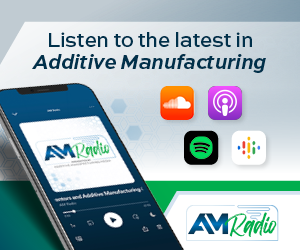Nexa3D, Siemens Collaborate to Optimize Polymer Production
Nexa3D’s entire Quantum Laser Sintering product line is being standardized to Siemens’ advanced factory automation and edge computing technologies.
Share
Read Next
Siemens and Nexa3D are partnering to further automate additive manufacturing (AM) for fast polymer production. As part of the collaboration, Nexa3D’s entire Quantum Laser Sintering (QLS) product line will be standardized to Siemens’ advanced factory automation and edge computing technologies.
The collaboration is designed to combine connectivity, digital twin sensing and data acquisition to deliver 24/7, lights-out predictive maintenance, process monitoring and print optimization for polymer AM solutions at scale on the factory floor. Nexa3D plans commercial delivery of its QLS-350 polymer production 3D printer powered by Siemens’ automation controls in the first quarter of 2021.
“We are very pleased to join forces with Nexa3D to unleash the power and potential of our products to create more resilient and sustainable supply chains,” says Tim Bell, head of additive manufacturing, Siemens Industry Inc. “COVID-19 underlined the incredibly rapid and flexible nature of our combined factory automation technologies, and additive manufacturing capabilities compared to traditional manufacturing, and demonstrates how vulnerable the global manufacturing supply chain is to unexpected disruptions. Working together with Nexa3D, we are bringing decades of proven Siemens factory automation experience and technology to additive manufacturing to help customers mainstream mission-critical production tools for future manufacturing strategies.”
Throughout COVID-19, both companies are continuing to expand their product portfolios as well as their partnerships and collaborations. This has enabled more customers to strengthen their design agility and supply chain resiliency by compressing their design and manufacturing cycle, effectively reducing the time required to produce functional prototypes and production parts from hours to just minutes.
“We believe that this collaboration is essential given the strengths of the 3D printing industry as demonstrated throughout the COVID-19 pandemic, and this is the right time to realize the combined potential that this partnership unlocks for the benefit of our expanding customer base,” says Kuba Graczyk, head of Thermoplastic Additive Business at Nexa3D.
Related Content
-
How AM Enables Cobot Automation for Thyssenkrupp Bilstein (Includes Video)
The shock absorber maker has responded to its staffing shortages through extensive use of collaborative robots. In-house 3D printing makes this possible by providing the related hardware needed to complete the cobot-automated cells.
-
Copper, New Metal Printing Processes, Upgrades Based on Software and More from Formnext 2023: AM Radio #46
Formnext 2023 showed that additive manufacturing may be maturing, but it is certainly not stagnant. In this episode, we dive into observations around technology enhancements, new processes and materials, robots, sustainability and more trends from the show.
-
Savage Automation Delivers 3D Printed Commercial Manufacturing Aids
The company's approach to designing end-of-arm tooling and other devices has evolved over the years to support longevity and repairs.










